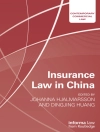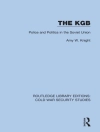This book examines the international development policies of five East Central European new EU member states, the Czech Republic, Hungary, Poland, Slovakia and Slovenia. These countries turned from being aid recipients to donors after the turn of the millennium in the run-up to EU accession in 2004. The book explains the evolution subsequent to EU accession and current state of foreign aid policies in the region and the reasons why these deviate from many of the internationally agreed best practices in development cooperation. It argues that after the turn of the millennium, a ‘Global Consensus’ has emerged on how to make foreign aid more effective for development. A comparison between the elements of the Global Consensus and the performance of the five countries reveals that while they have generally implemented little of these recommendations, there are also emerging differences between the countries, with the Czech Republic and Slovenia clearly aspiring to become globally responsible donors. Building on the literatures on foreign policy analysis, international socialization and interest group influence, the book develops a model of foreign aid policy making in order to explain the general reluctance of the five countries in implementing international best practices, and also the differences in their relative performance.
Simon Lightfoot & Balazs Szent-Ivanyi
New Europe’s New Development Aid [PDF ebook]
New Europe’s New Development Aid [PDF ebook]
购买此电子书可免费获赠一本!
语言 英语 ● 格式 PDF ● 网页 228 ● ISBN 9781136010569 ● 出版者 Taylor and Francis ● 发布时间 2015 ● 下载 3 时 ● 货币 EUR ● ID 4204107 ● 复制保护 Adobe DRM
需要具备DRM功能的电子书阅读器












